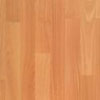Steamed Beech

| Wood type | Hardwood | |
| Environmental | Not listed in CITES. Believed available from well-managed sources. Check certification status with suppliers. | |
| Distribution | Europe, especially central Europe and Britain. | |
| The Tree |
|
|
| The Timber | Normally, there is no clear distinction by colour between sapwood and heartwood, the wood being very pale brown when freshly cut, turning reddish-brown on exposure, and deep reddish-brown under the influence of steaming treatment commonly applied in parts of the Continent before shipment. Some logs show an irregular, dark reddish-coloured kern or heart, caused it is believed, by the effect of severe frosts, and occurring more frequently in Continental beech. The wood is typically straight grained, with a fine, even texture, but varying in density and hardness according to the locality of growth.Thus beech from central Europe, notably that from Yugoslavia (Slavonian), and that from Romania is milder and lighter in weight, about 672 kg/m3, than beech from Britain, Denmark and northern Europe, which weighs about 720 kg/m3 when dried. |
|
| Drying | Although it dries fairly rapidly and fairly well, beech is moderately refractory, tending to warp, twist, check and split, and shrink considerably. It therefore requires care both in air drying and kiln drying. |
|
| Strength | Green beech has general strength properties roughly equal to those of oak, but after drying, most values increase, and beech is stronger than oak in bending strength, stiffness and shear by some 20 per cent, and considerably stronger in resistance to impact loads. | |
| Working Qualities | Good – Good | |
| Durability | Not durable | |
| Treatability | Easy* | |
| Moisture Movement | Large | |
| Density (mean, Kg/m³) |
720 | |
| Texture | Fine | |
| Availability | Regular | |
| Price | Low to medium | |
| Excellent bending properties | ||
| Use(s) | Interior joinery, Furniture, Plywood, Flooring | |
| Colour(s) | Pink/pale red, Reddish brown (after steaming), White/cream |
